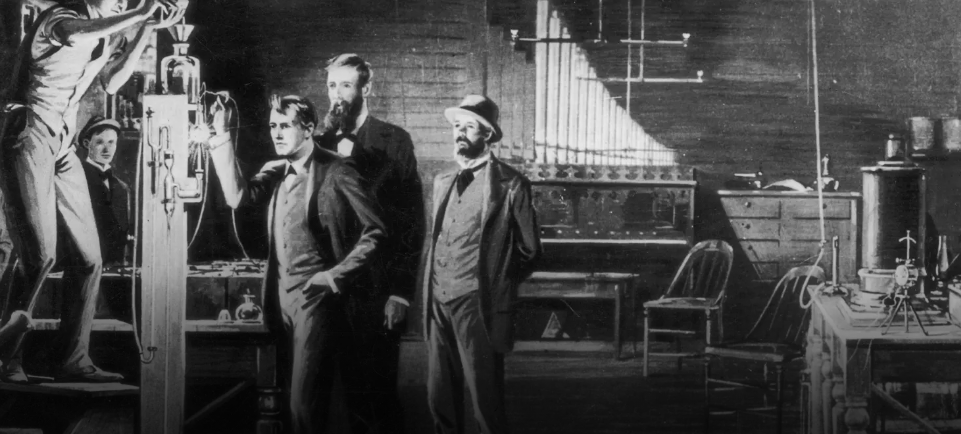Breaking New Ground: Fundamental Revelations from the Industrial Revolution
The Industrial Revolution was the dividing line in history that drastically altered societies, economies, and technologies. Major discoveries showed that this period not only changed industries but changed daily life and even work. Innovations during the era paved the way for modern-day developments and have current impact on the world today.
Understanding this revolution-what it did and how-диает sense of how technological change can propel change. Be it the steam engine or mass production, each brought about a very different way of living. These inventions created employment and a whole new relationship with urban life; this makes their history relevant even in modern times.
This blog post covers the critical findings and inventions that were realized in the Industrial Revolution. Readers develop an appreciation for how these changes formed the modern era and continue to have an effect on daily life.
Key Takeaways
The Industrial Revolution made several key innovations that restructured industries.
New technologies shifted how people worked and lived in the cities.
The impact of this period can be felt today within technological developments.
Historical Context and Overview
The Industrial Revolution characterizes the revolution in society and economy from traditional crafts to machine-based manufacturing. New manufacturing methods using power machinery and new sources of power, such as steam engines, transformed urban labor and changed the way goods were produced. Understanding the roots and the timeline of this period helps appreciate many of the wide-reaching effects.
Roots of the Industrial Revolution
The Industrial Revolution began in the late 18th century. It started in Britain due to many factors such as available coal and iron, a stable political regime, and improvements in agriculture.
The agricultural improvements led to an increased food supply. Consequently, a very large population was realized and was available for employment in factories. There were innovations in the form of things such as the steam engine and spinning jenny that transformed industries and made mass production possible.
The factory system emerged, and labor had to shift from homes to factories. Workers were paid low wages with long hours of work and poor working conditions, which brought about several social changes and movements of rights. This era laid the basic role of modern industry and societal structures.
Timeline and Geographical Spread
The Industrial Revolution started in Britain around 1760, reached Western Europe and North America in the early 1800s, besides the introduction of steam power in the late 18th century to enhance transportation and manufacturing.
The mid-19th century saw the start of industrialization in various countries like Germany and France. In the late 1800s, the pace of industrialization in the United States was set at a fast track due to new technologies and infrastructural innovations.
The revolution carried well into the early 20th century, impacting nations across the world. The Japanese and Russian empires were undertaking the practice of industrialization, hence causing ripples in economies across the world. Consequently, there was a reordering of economies and a reordering of societies across the world.
Technologies and Innovations that Transformed
The Industrial Revolution transformed society via a number of technologies and innovations. Technology and innovation greatly improved productivity and efficiency in industries and society in general.
Textile Industry Advances
The textile industry was one of the industries that were completely transformed by the Industrial Revolution. Inventions such as the spinner’s wheel, spinning jenny, and power loom absolutely changed fabric production.
Spinning Jenny: Invented in 1764 by James Hargreaves, legend has it, workers could spin more than one thread at a time with it, making yarn production rise.
Power Loom: Invented by Edmund Cartwright in 1785, weaving automated just totally accelerated the pace of the work.
These inventions made fabrics much cheaper and more available, reinforcing the consumption of ready-made clothes. Factories came instead of workshops, and mass production put different labour relations.
Advances within Iron and Steel Production
Iron and steel production had several breakthroughs that allowed for more possibility of construction and production of everything else.
The Cort Process conveniently revolutionized the production of pig iron by being less time-consuming and of superior quality.
- Bessemer Process: Henry Bessemer developed this process in the 1850s, and it made steel more available and at a much cheaper and faster rate.
These processes helped create an increasingly supply of steel. This made stronger and more resilient bridges, railways, and buildings. For such reasons, this transition in materials supported urbanization and enhanced transportation.
Steam Engine and Transportation
The most significant innovation regarding transportation during this period was the steam engine.
This steam engine was refined into the motive power for locomotives and steamships by James Watt in the late 18th century. Railroads developed extensively since cities were linked and the movement of goods and people accelerated. Steam-powered ships reduced the travel time across bodies of water. What ensued was a great consequence of trade and communication, and with effectiveness in transportation, societies functioned quite differently.

Also Read :
